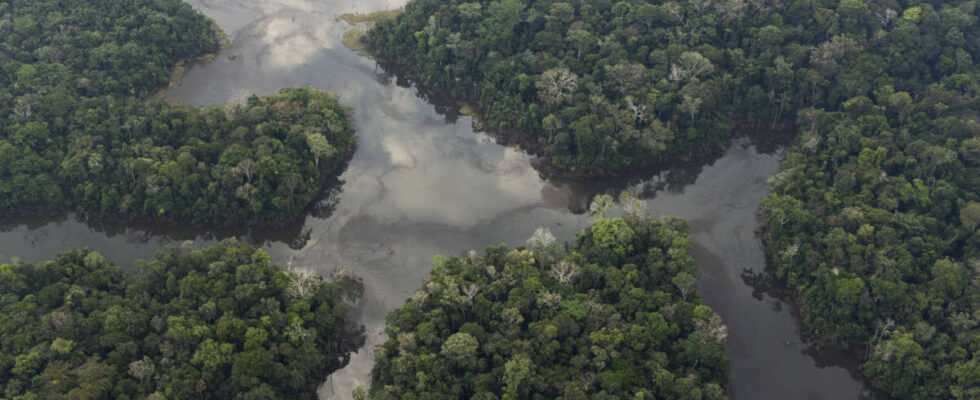What are planetary boundaries?
They are nine in number. These are climate change, erosion of biodiversity, disruption of nitrogen and phosphorus cycles, modification of land use, chemical pollution, use of freshwater, depletion of the ozone layer, ocean acidification and the concentration of atmospheric aerosols.
These boundaries have remained relatively stable since the beginnings of human civilizations 10,000 years ago. However, the first six mentioned above have already been exceeded in recent decades.
However, if these limits are crossed, Man exposes himself and his environment to sudden and potentially catastrophic changes, as explained by the Stockholm Resilience Center.
What is “green water”?
In their recent study, researchers from the Stockholm Resilience Center – helped by those from the Potsdam Institute – define green water as all the water resulting from precipitation, evaporation or even soil moisture which is then sucked up by plants. “It is fundamental to the proper functioning of the planet and is today extremely disturbed by human pressure, on a planetary scale”, write the authors of the study.
Unlike blue water, “which corresponds to water in rivers, lakes and groundwater and which is easy to quantify”, “green water, which is included in soils, has no considered for many years”, explains Emma Haziza, hydrologist. It is essential for the proper functioning of ecosystems, plants and soil humidification.
In fact, green water was not originally part of the nine planetary boundaries. Like blue water, green water was included in the “freshwater cycle” limit, which the scientists decided to split into two with the green water cycle on one side and the another, the blue water cycle. This limit has not yet been crossed, according to the researchers. Or at least, no study has, for the time being, demonstrated it.
The graph below, drawn up by the Stockholm Resilience Center and translated by the media Bon Pote, which specializes in the environment and climate, materializes in orange the crossing of six planetary boundaries out of nine. Among them, the cycle of fresh water, and in particular green water, which has come out of the “safe space”, represented in green. The higher the risk of exceeding a limit, the further the orange space spreads out from the center of the circle.
Crossing the green water limit, a sign of soil aridification
“In concrete terms, what the study shows is that everywhere in the four corners of the planet, we have aridification that is in the process of being put in place”, continues Emma Haziza.
And this because of the action of man. “If we have urbanized soils, subjected to intensive agriculture, land compaction or pesticides, then we no longer have organic matter, we lose the biodiversity that the soil contains and we also lose the means of conserving the soil. water in the soil,” she laments. “However, running out of water in our soils means having no more regeneration and no more plants. This leads to aridification.”
“If we don’t return a sufficient quantity of water to the natural environment, we won’t allow the renewal of the system and everything collapses. This is what is happening everywhere”, assures the researcher based on the study published in Nature.
The crossing of this limit is indeed very worrying, according to Johan Rockström, co-author of the study and one of the researchers who established the concept of planetary limit more than ten years ago. “Plants suffer from lack of water caused by human interference in the water cycle. Entire ecosystems like the Amazon rainforest are starting to dry up because of this,” he warned on Twitter.
“This phenomenon is global,” says the Stockholm Resilience Center. “Everywhere, from boreal forests to the tropics, from fields to forests, soil moisture is changing. But certain territories, starting with the Amazon, are particularly at risk.
But France is also affected, emphasizes Emma Haziza, “because we have massively used up our soils by exploiting them as land resources. The agricultural model implemented since the post-war period has led France towards aridification”.
Can green water be regenerated?
Even if the green water limit has been exceeded, Emma Haziza assures us: it is possible to go back. In France, “we must stop artificializing the soil, we must transform our cities by greening them, we must change the agricultural model and integrate agroforestry and permaculture. And above all, stop maize,” says the hydrologist, who notes that it is a particularly water-voracious plant for soils that are drying out more and more.
“Limiting the risks associated with the lack of green water requires changes now to combat deforestation and land degradation”, continues Ingo Fetzer, co-author of the study, in a press release from the Stockholm Resilience Center. .
Blue water, the next step?
Only three planetary limits out of nine have not yet been crossed, as well as that of blue water. In the eyes of Emma Haziza, “this is the next step”, especially in Europe where “we are very far from having a good state of waterways”.
The general opinion of scientists is that it seems unlikely that the three remaining limits will not be exceeded if no changes are made on a global scale to combat the causes of global warming.
